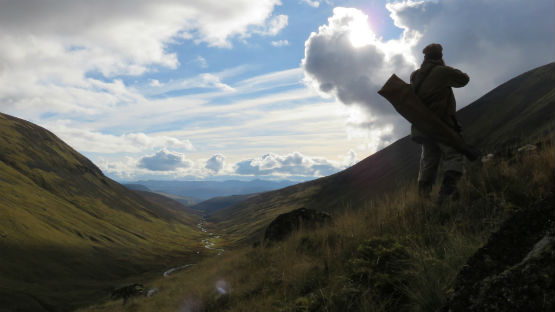At last, with the season for females now underway, those with a genuine deer management job to do, can finally set about their work.

Anyone who possesses the most moderate comprehension of deer management and population dynamics, will understand, that you can bash away at the males as much as you like without the slightest impact on overall deer numbers. It is only when you shoot females that you start to impact on deer densities and the environmental impact that deer have on the countryside.
Indeed, in an ideal world, without financial pressures, those deer managers who genuinely need to regulate deer damage, would be best advised to hold off on shooting any deer at all, until the start of the doe/hind season, so as not to unnerve and inform the deer prior to such time as the stalker can properly get to grips with them. However, in the real world, most estates need the revenue received from paying guests, who form a crucial role in the overall financial viability of the estate, and so gladly entertain clients who are prepared to hunt the more desirable and lucrative male.
That said I have found that there is an increasing eagerness amongst recreational hunters to stalk for the ‘pot’ rather than for a memento, and so hind and doe stalking, with the associated smaller fee, is proving increasingly popular.
Even in Scotland, most estates have long since woken up to the desire amongst clients to stalk hinds, and so have opened their doors to paying guests, at least through the early part of the hind season. It is a happy coincidence, brought on by milder autumns, that those that elect to stalk hinds in late October and early November are often doing so amidst the height and ‘roar’ of the rut, which every year seems to arrive later and later.
As you read this, in company with a handful of member of the Capreolus Club, I will be putting my money where my mouth is, and will be stalking some of the most spectacular scenery that the highlands has to offer during the second week of the hind season, and it is from this glorious location that we aim to gather film footage for a Scotland special at the end of the month.
 IN Season in England & Wales: Roe Doe, Fallow Doe & Fallow Buck, Sika Stag & Sika Hind, Red Stag & Red Hind, CWD Buck & CWD Doe, Muntjac Buck & Muntjac Doe.
IN Season in England & Wales: Roe Doe, Fallow Doe & Fallow Buck, Sika Stag & Sika Hind, Red Stag & Red Hind, CWD Buck & CWD Doe, Muntjac Buck & Muntjac Doe.
OFF Season in England & Wales: Roebuck.
In Season in Scotland: Fallow Buck, Fallow Does, Roe Doe, Sika Hind, Red Hind.
Off Season in Scotland: Red Stag, Sika Stag & Roebuck
(Peter Jones - Editor)



















